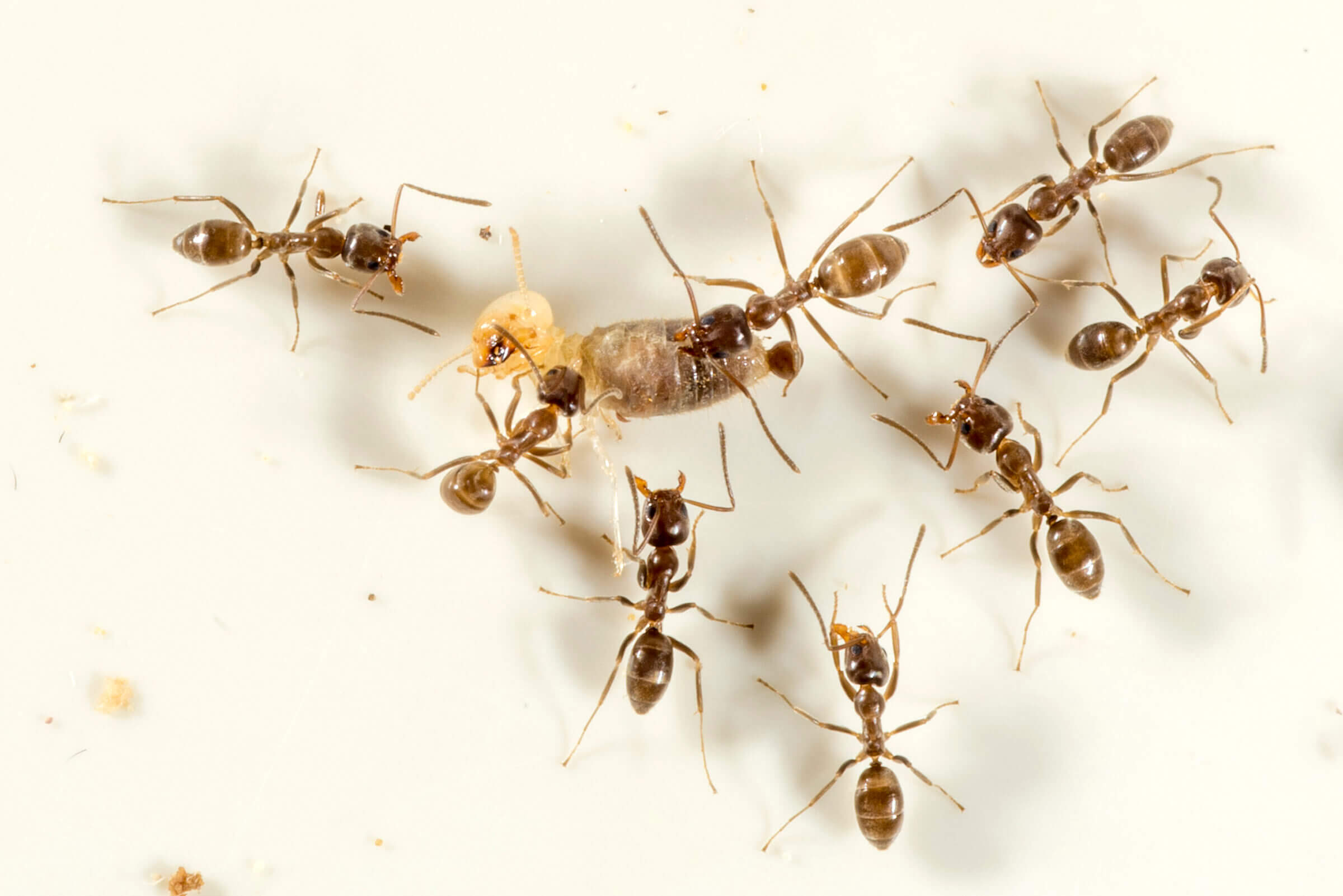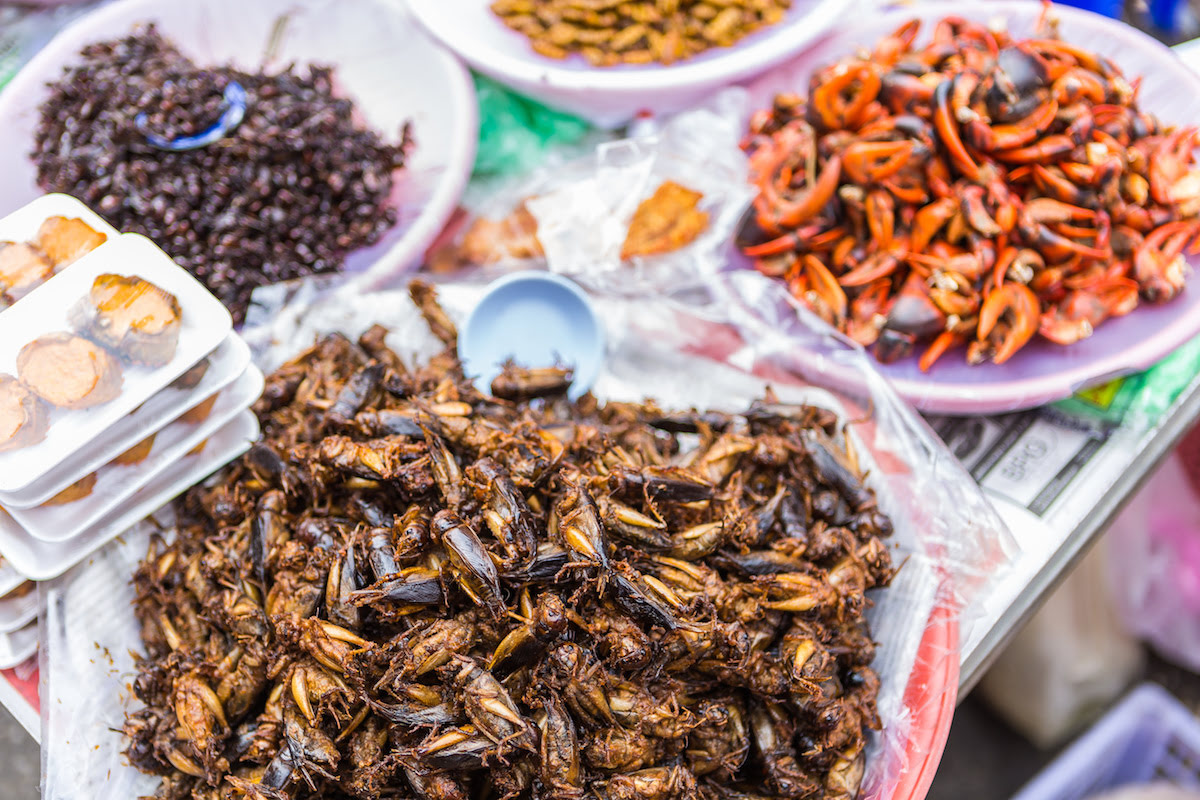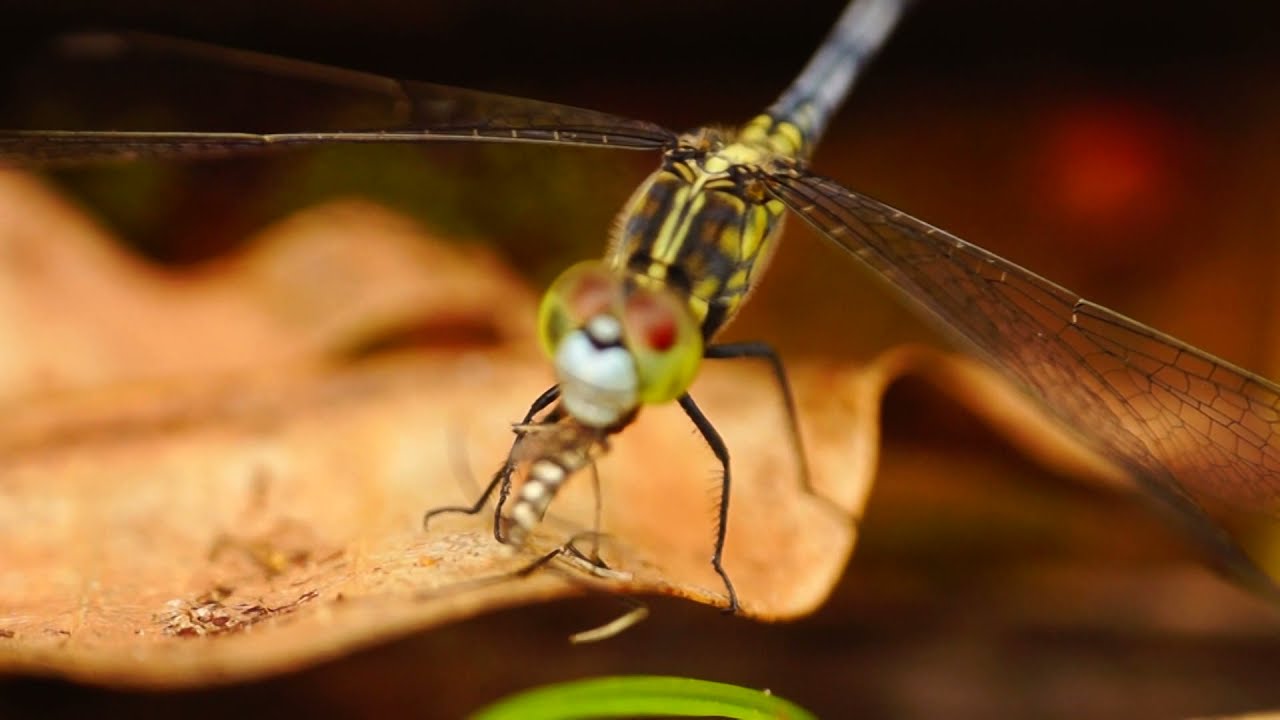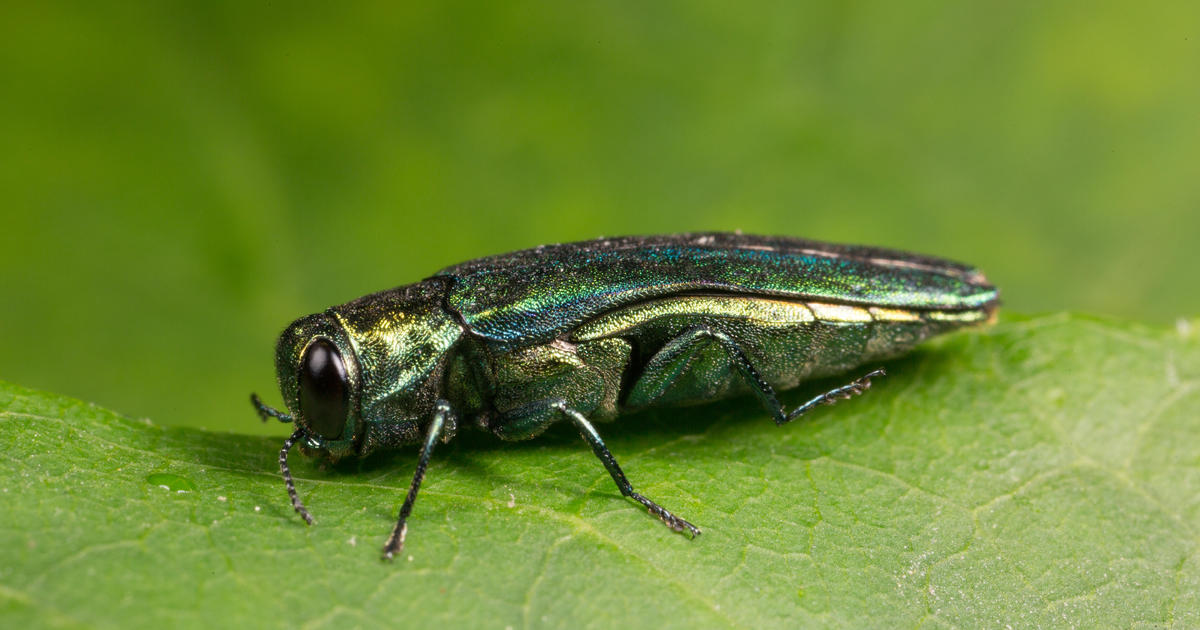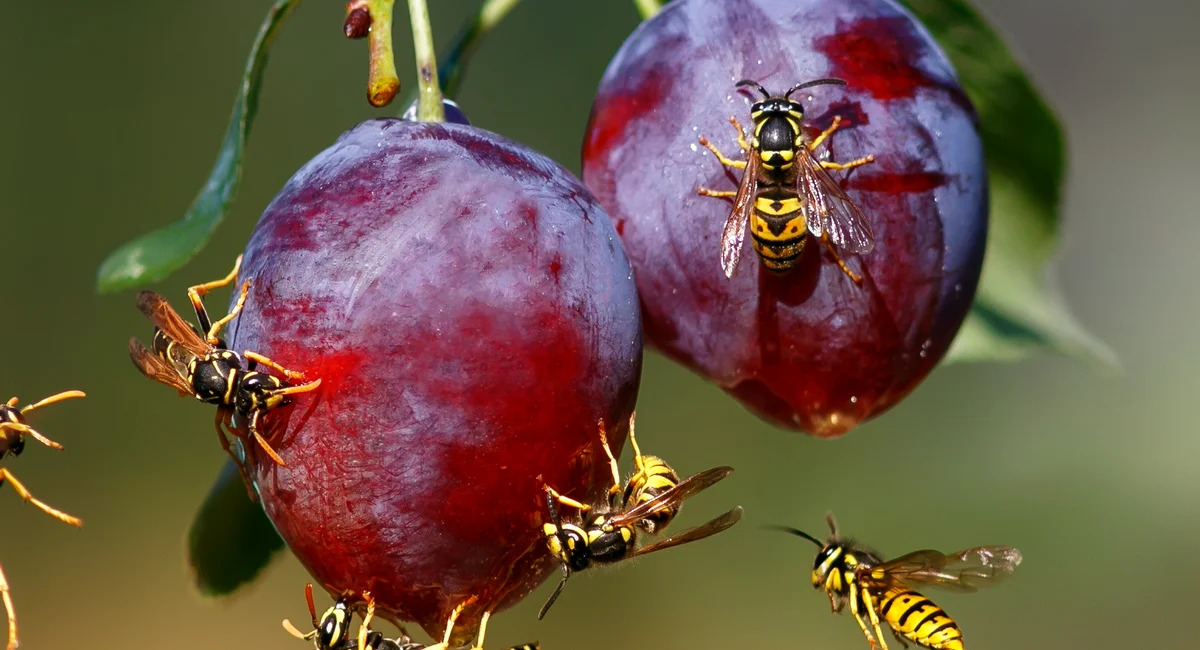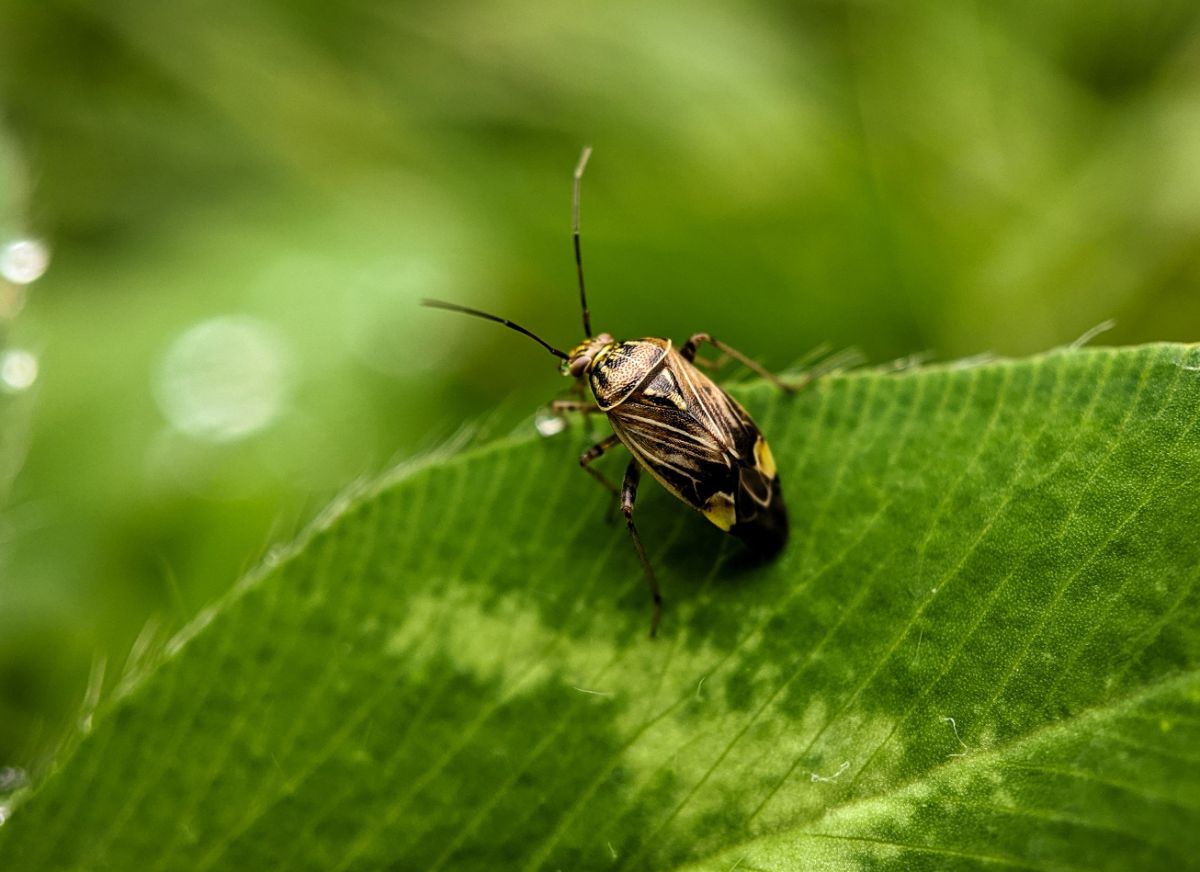Home>Gardening News and Trends>Latest News>What Eats Insects In The Rainforest
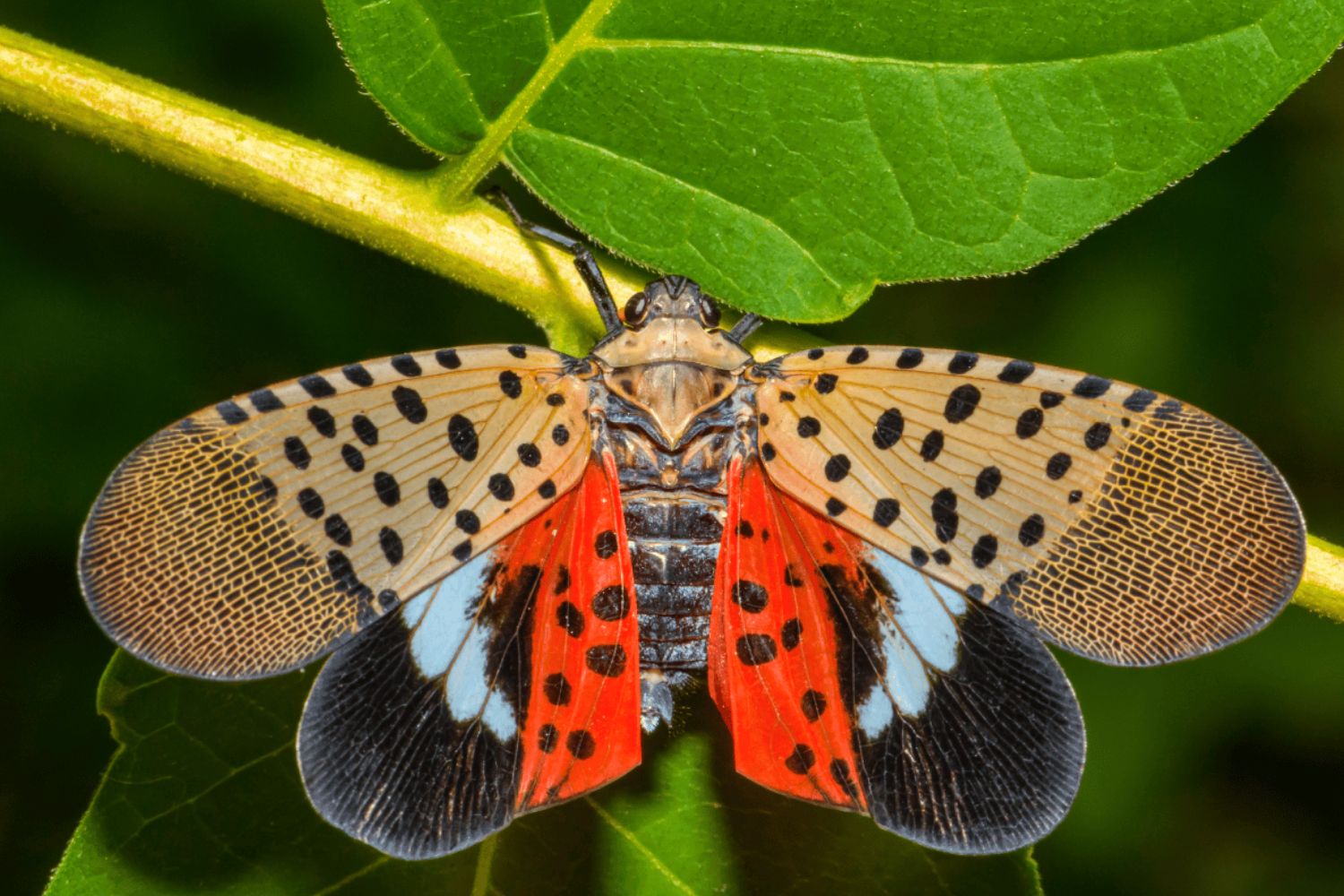

Latest News
What Eats Insects In The Rainforest
Modified: January 22, 2024
Discover the fascinating world of insect predators in the rainforest. Stay updated with the latest news on what eats insects, their unique hunting techniques, and their crucial role in the delicate ecosystem.
(Many of the links in this article redirect to a specific reviewed product. Your purchase of these products through affiliate links helps to generate commission for Chicagolandgardening.com, at no extra cost. Learn more)
Table of Contents
Introduction
The rainforest is a rich and diverse ecosystem teeming with life. From towering trees to vibrant flora and fauna, it is home to countless species that have adapted to its unique environment. Among these inhabitants, insects play a crucial role in the delicate balance of the rainforest ecosystem.
Insects make up a significant portion of the rainforest’s biodiversity, comprising a staggering number of species with incredible adaptations. They serve as pollinators, decomposers, and prey to a wide range of predators. Understanding the predators that eat insects in the rainforest is essential to appreciate the complexity of this ecosystem and how its inhabitants interact with one another.
This article will explore the various predators that feast on insects in the rainforest, shedding light on their hunting behaviors, adaptations, and the ecological significance of their roles. From birds and reptiles to amphibians, mammals, and even arachnids, the rainforest is home to a diverse range of predators that rely on insects as a vital source of sustenance.
By examining these predators, we can gain a deeper appreciation for the complexity and diversity of the rainforest ecosystem. So, let’s dive in and discover the remarkable creatures that eat insects in the rainforest.
Definition of the Rainforest Ecosystem
The rainforest ecosystem is a complex and diverse network of plants, animals, and microorganisms that thrive in humid tropical regions. It is characterized by dense vegetation, high rainfall, and a remarkable level of biodiversity. Rainforests are found in various parts of the world, including the Amazon Basin, Congo Basin, and Southeast Asia.
These ecosystems are divided into four layers: the emergent layer, canopy, understory, and forest floor. Each layer provides a unique habitat for different species, creating a vertical biodiversity gradient. The emergent layer is home to tall, towering trees that rise above the forest canopy, while the canopy hosts a dense cover of intertwined branches and leaves.
The rainforest ecosystem is characterized by a high level of productivity and energy flow. Sunlight is abundant, allowing plants to photosynthesize and convert solar energy into organic matter. This abundance of vegetation provides a plentiful food source for a variety of animals and, consequently, supports a wide range of ecological interactions.
Additionally, the rainforest ecosystem plays a significant role in regulating global climate patterns. The dense vegetation and high levels of evapotranspiration contribute to the formation of clouds and the distribution of rainfall in the surrounding areas. Rainforests are often referred to as the world’s “lungs” as they absorb carbon dioxide and release oxygen, helping to stabilize the Earth’s atmosphere.
The combination of favorable climate, abundant resources, and complex ecological relationships makes the rainforest ecosystem one of the most diverse and vital on the planet. It is estimated that rainforests are home to more than 50% of the world’s plant and animal species, many of which are still undiscovered by scientists.
Understanding the unique characteristics of the rainforest ecosystem is crucial in recognizing the importance of conserving these habitats. By preserving rainforests, we can not only protect countless species but also preserve the intricate web of life that is essential for our planet’s health and sustainability.
Importance of Insects in the Rainforest
Insects are a vital component of the rainforest ecosystem, playing various roles that contribute to its overall health and functioning. Their importance extends beyond their sheer abundance, with countless species fulfilling crucial ecological functions.
One of the primary roles insects play is that of pollinators. They facilitate the reproduction of many plant species by transferring pollen from male to female flower parts. This process enables plant fertilization and the production of fruits and seeds. Without insect pollinators, many plant species in the rainforest would struggle to reproduce, leading to a decline in biodiversity.
Insects also serve as decomposers, breaking down organic matter and releasing nutrients back into the soil. They play a crucial role in nutrient cycling, facilitating the recycling of essential elements that sustain the rainforest’s productivity. By breaking down dead plant material and detritus, insects contribute to the overall health of the ecosystem.
Furthermore, insects form the foundation of the food web in the rainforest. They provide a crucial source of sustenance for a vast array of predators, including birds, reptiles, amphibians, mammals, and other insects. The availability of insects as a food source influences the distribution and abundance of these predator species.
Additionally, some insects have developed unique symbiotic relationships with plants in the rainforest. For example, certain species of ants form mutualistic associations with plants, offering protection in exchange for food and shelter. These interactions showcase the intricate and interdependent relationships that exist within the rainforest ecosystem.
Moreover, insects contribute to the overall biodiversity of the rainforest, with their sheer abundance and incredible species diversity. From brightly colored butterflies to intriguing beetles and striking insects such as stick insects and leafhoppers, the rainforest is home to an astounding number of insect species, each playing a specific role in the ecosystem.
Understanding the importance of insects in the rainforest is crucial for conservation efforts. Protecting insect populations and their habitats is not only essential for the survival of these remarkable creatures but also for maintaining the overall balance and functioning of the rainforest ecosystem.
Predators of Insects in the Rainforest
In the intricate web of life that exists in the rainforest, insects are not only prey but also become targets for a wide variety of predators. These predators have evolved unique adaptations and hunting strategies to capture and consume insects as a vital source of sustenance.
Birds, with their aerial skills and keen eyesight, are one of the most voracious predators of insects in the rainforest. Species such as toucans, flycatchers, and honeycreepers have specialized beaks and sharp claws that enable them to snatch insects from foliage or catch them mid-flight. Birds also play a crucial role in controlling insect populations, helping to maintain balance within the ecosystem.
Reptiles such as lizards and snakes are also adept at hunting insects in the rainforest. Chameleons, for example, use their remarkable camouflage and long, sticky tongues to capture insects with precision. Snakes, on the other hand, rely on stealth and ambush techniques to catch insects, striking swiftly with their venomous bites.
Amphibians, including frogs and toads, are well-known predators of insects in the rainforest. Their specialized tongues and sticky saliva allow them to snatch insects at lightning speed. Some species, such as the famous poison dart frogs, have toxic skin secretions that deter predators, making them efficient insect hunters in their environment.
Mammals also play a significant role in curbing insect populations. Bats, for instance, are nocturnal predators that feed heavily on insects. With their echolocation abilities, they can precisely locate and consume large numbers of insects in a single night. Insects also form a crucial part of the diet for primates such as tamarins and marmosets, contributing to their overall nutrition.
Fascinatingly, even arachnids like spiders and scorpions have a role to play in the predation of insects in the rainforest. With their ability to weave intricate webs, spiders create traps to ensnare unsuspecting insects. They can capture prey that ranges from small insects to larger species like butterflies and beetles. Scorpions, on the other hand, use their powerful pincers and stingers to catch and immobilize insects.
The predators of insects in the rainforest showcase the complexity of the food web and the diverse strategies that have evolved in this unique ecosystem. The interplay between these predators and insects helps to maintain a delicate balance and ensure the overall health and stability of the rainforest.
Birds
Birds are prominent predators of insects in the rainforest, utilizing their extraordinary flying abilities, sharp beaks, and keen eyesight to hunt down their prey. Their role as insectivores is vital in controlling insect populations and maintaining the ecological balance of the rainforest.
Toucans, with their large, colorful beaks, are a notable example of insect-eating birds found in the rainforest. They use their beaks to pluck insects from tree branches, often reaching into small crevices to extract prey such as beetles and caterpillars. Toucans also consume fruits, which often attract insects and provide an additional food source.
Flycatchers, as their name suggests, specialize in catching insects on the wing. These agile birds are skilled aerial hunters, swiftly darting from perches to snatch flying insects mid-air. They have a distinct and characteristic flycatching behavior, making quick and precise sallies to capture their prey before returning to their perch.
Honeycreepers are another group of birds that feed on insects. With their slender, curved beaks, they seek out nectar from flowers but also incorporate insect prey into their diet. Honeycreepers play a crucial role in pollination as they inadvertently transfer pollen from flower to flower while feeding on nectar.
In addition to these specialized insectivores, many other bird species in the rainforest include insects as part of their diet. Warblers, woodpeckers, and thrushes are known to forage for insects among leaf litter and tree bark, using their sharp bills to pry off bark and find hidden insects beneath the surface. They play an important role in controlling the populations of various insect species throughout the forest.
Moreover, birds such as kingfishers and herons are skilled at hunting aquatic insects and small aquatic organisms. They use their long, sharp beaks to snatch up insects from the water’s surface or dive into the water to catch fish and other aquatic prey.
The presence of birds as predators of insects in the rainforest is crucial for the ecosystem’s health. By consuming a significant number of insects, birds help to regulate the population sizes of pest species, preventing outbreaks that could threaten the balance of the rainforest. Additionally, as birds move throughout the forest in search of insects, they aid in seed dispersal, contributing to the overall regeneration and diversity of plant life.
The remarkable hunting abilities and diverse diets of birds in the rainforest highlight their essential role as predators of insects. Their presence and activities contribute to the intricacy and balance of the rainforest ecosystem, affirming their status as an integral part of its biodiversity.
Reptiles
Reptiles are formidable predators of insects in the rainforest, relying on their unique adaptations and hunting strategies to capture their prey. These cold-blooded hunters play a vital role in regulating insect populations and contributing to the overall balance of the rainforest ecosystem.
One group of reptiles that preys on insects in the rainforest is lizards. These agile creatures are well-suited to their environment, using their long tails and impressive climbing abilities to pursue their prey. Lizards have exceptional vision, which enables them to detect the slightest movements of insects, even from a considerable distance. Once within striking range, they pounce on their unsuspecting prey with remarkable speed and accuracy.
Geckos and anoles are two examples of lizard species commonly found in rainforest habitats. They are known for their ability to climb vertical surfaces and even walk upside down on leaves and branches. Both geckos and anoles have specialized toe pads covered in microscopic structures called setae, which allow them to grip surfaces with ease, facilitating their pursuit of insects in various areas of the rainforest.
Snakes are also significant predators of insects in the rainforest. While they are more commonly associated with consuming larger prey, such as rodents and birds, snakes also consume a considerable number of insects. Some snake species, such as vine snakes, have remarkable camouflage adaptations that allow them to blend seamlessly with the vegetation, making it easier for them to ambush and capture unsuspecting insects.
Chameleons, known for their unique ability to change color, are another group of reptiles that hunt insects in the rainforest. They have elongated bodies, prehensile tails, and eyes that are capable of moving independently, enabling them to locate and track their insect prey with precision. Chameleons have long, sticky tongues that they project with lightning-fast speed to snatch up insects from leaves or branches.
Reptiles like the green iguana and the basilisk are known to feast on insects in addition to their herbivorous diet. Their primarily plant-based diet is supplemented with insects, which provide them with essential proteins and nutrients. These reptiles have specialized jaws and teeth adapted for consuming a wide variety of plant material and smaller prey, including insects.
The presence of reptiles as predators of insects in the rainforest is crucial for maintaining the ecological balance. By controlling insect populations, they prevent outbreaks that could disrupt the delicate interplay between different species in the ecosystem. Additionally, reptiles serve as indicators of the overall health of the rainforest, as their abundance and diversity reflect the presence of a thriving insect population and a well-balanced ecosystem.
Reptiles, with their unique adaptations and hunting strategies, contribute to the biodiversity and stability of the rainforest ecosystem. Their role as predators of insects underscores the intricate web of interactions that make the rainforest such a remarkable and diverse habitat.
Amphibians
Amphibians, with their diverse adaptations and unique life cycles, are important predators of insects in the rainforest. These cold-blooded creatures have a significant impact on maintaining insect populations and contributing to the overall balance of the rainforest ecosystem.
Frogs and toads are well-known amphibians that play a vital role in controlling insect populations in the rainforest. They have specialized hunting adaptations, such as a sticky tongue and powerful hind legs, that allow them to capture a wide range of insect prey with precision and speed. These predators are particularly successful at catching flying insects, utilizing their agile jumping abilities to pounce on their prey mid-flight.
One fascinating example of insect-eating amphibians in the rainforest is the family of poison dart frogs. These brightly colored frogs secrete toxins through their skin, deterring potential predators. While their diet primarily consists of small invertebrates, including ants, beetles, and spiders, some species also consume small insects like springtails and aphids. The presence of poison dart frogs in the rainforest helps regulate the populations of insects, contributing to the overall balance of the ecosystem.
Amphibians are also known to consume insects during their aquatic stages. Tadpoles, the larvae of frogs and toads, have specialized mouthparts designed for feeding on algae, detritus, and small invertebrates present in the water. These larvae act as filter feeders, actively consuming any small insects or invertebrates they encounter, further contributing to insect population control in the rainforest.
The hunting methods of amphibians in the rainforest vary, depending on their specific physical adaptations and environmental conditions. Some species have powerful jaw muscles and can engulf prey whole, while others have specialized teeth and jaws suited for tearing apart larger insects. Regardless of their specific hunting strategies, amphibians play a crucial role in regulating insect populations, preventing outbreaks that could disrupt the balance of the rainforest ecosystem.
Amphibians not only contribute to controlling insect populations but also serve as indicators of environmental health. Their sensitivity to changes in water quality and habitat conditions makes them valuable bioindicators. Declining amphibian populations can signify imbalances within the rainforest ecosystem, such as pollution or habitat destruction, which can have cascading effects on the entire ecosystem.
The presence of amphibians as predators of insects highlights the critical role they play in maintaining the overall balance and health of the rainforest ecosystem. Their diverse adaptations, unique life cycles, and ability to regulate insect populations make them an integral part of the intricate web of life in the rainforest.
Mammals
Mammals in the rainforest exhibit a wide range of adaptations and hunting strategies, making them formidable predators of insects. These warm-blooded creatures play a crucial role in regulating insect populations and contributing to the overall balance of the rainforest ecosystem.
Bats are one group of mammals that heavily rely on insects as a food source. These nocturnal creatures possess unique adaptations for hunting, such as echolocation. They emit high-frequency sounds that bounce off objects, allowing them to navigate and detect prey in the dark. Bats are known to consume large quantities of insects every night, making them important regulators of insect populations in the rainforest.
Primates, including monkeys and tree-dwelling species like tamarins and marmosets, also play a significant role in insect predation. Insects form an essential part of their diet, providing vital protein and nutrients. These primates possess agile bodies, allowing them to climb trees and leap from branch to branch as they forage for insects amongst the foliage. They employ various techniques, such as using their hands and feet to extract insects from crevices or using tools to extract insects from tree trunks.
Small carnivorous mammals, such as bats, anteaters, and small wild cats, have a varied diet that includes insects. They are equipped with specialized adaptations that enable them to capture and consume insects efficiently. Anteaters, for example, have long, sticky tongues and powerful claws, which they use to break into termite mounds and ant nests to extract their prey.
Even larger mammals, such as some species of bears and wild boars, are known to supplement their diet with insects found in the rainforest. These omnivorous mammals have strong jaws and sharp teeth, enabling them to prey on various insects, including beetles, larvae, and ants. Insects provide them with an additional source of nutrients, especially during times when other food sources may be scarce.
It is important to highlight that insectivorous mammals play a significant role in controlling insect populations, preventing outbreaks that could potentially upset the ecological balance of the rainforest. Their feeding habits contribute to regulating insect abundance, benefiting the overall health and stability of the ecosystem.
The presence of mammals as predators of insects underscores the diversity and complexity of the rainforest ecosystem. Their hunting strategies, varied diets, and ecological roles highlight their importance in maintaining the overall balance and functioning of the rainforest habitat.
Arachnids
Arachnids, a class of joint-legged invertebrates, include spiders, scorpions, and other related creatures. While often associated with fear and unease, these fascinating creatures play a significant role as predators of insects in the rainforest ecosystem. Armed with specialized adaptations and venomous capabilities, they contribute to maintaining the delicate balance of the rainforest.
Spiders, with their intricate webs and stealthy hunting techniques, are exceptional predators of insects. They weave intricate silk structures, patiently waiting for unsuspecting prey to become entangled in their webs. Once trapped, spiders immobilize their prey using venomous bites. Rainforest spiders consume various types of insects, including flies, mosquitoes, beetles, and even larger prey such as butterflies and grasshoppers.
Another group of arachnids that prey on insects in the rainforest are scorpions. With their curved pincers and venomous stingers, scorpions are formidable predators. They use their pincers to capture and hold their prey while injecting venom to immobilize them. While scorpions primarily feed on small invertebrates, they also hunt for insects, including crickets, grasshoppers, and cockroaches.
Arachnids are also known for their remarkable ambush hunting strategies. Some species, like the tarantula, lie in wait for their insect prey, hiding in burrows or camouflaging themselves in tree bark or leaf litter. When an unsuspecting insect approaches, the tarantula rapidly pounces on its prey, injecting venom to incapacitate it before consuming it.
While spiders and scorpions are well-known arachnids that prey on insects, other rainforest-dwelling arachnids also contribute to controlling insect populations. Harvestmen, also known as daddy longlegs, are arachnids that have long legs and feed on small invertebrates, including insects. These creatures play a role in regulating insect populations at ground level within the rainforest.
The presence of arachnids as predators of insects supports the intricate balance within the rainforest ecosystem. By preying on insects, they naturally help control their populations, preventing outbreaks of pest species that could disrupt the ecosystem. Arachnids also serve as alternative food sources for other predators, contributing to a complex food web within the rainforest.
Understanding and appreciating the role of arachnids as predators of insects in the rainforest is crucial in recognizing their contribution to the overall health and stability of this unique ecosystem. Their fascinating adaptations, hunting strategies, and ability to control insect populations make them an integral part of the intricate web of life in the rainforest.
Conclusion
The rainforest is a dynamic ecosystem teeming with life, and insects are an integral component of its biodiversity. They serve as pollinators, decomposers, and an essential food source for a variety of predators. Understanding the predators that consume insects in the rainforest provides insight into the intricate web of life and the delicate balance that exists within this ecosystem.
Birds, reptiles, amphibians, mammals, and arachnids all play significant roles in controlling insect populations in the rainforest. Birds, with their aerial prowess and keen eyesight, snatch insects from branches or catch them mid-flight. Reptiles, such as lizards and snakes, use their unique adaptations to stalk and capture insects, while amphibians like frogs and toads employ their specialized tongues to snatch up prey.
Mammals, including bats, primates, and smaller carnivores, actively consume insects as part of their diet, contributing to population control. Meanwhile, arachnids like spiders and scorpions weave intricate webs or employ ambush techniques to capture and feed on insects.
The presence of these predators in the rainforest serves as a natural mechanism for regulating insect populations. By preying on insects, these animals help control the abundance of pest species, ensuring the overall health and stability of the ecosystem. Additionally, their hunting behaviors and feeding habits contribute to the balance and diversity of the rainforest by shaping the food web and ecological interactions.
Understanding the importance of predators of insects in the rainforest emphasizes the interconnectedness of all living organisms in the ecosystem. Each predator has unique adaptations and strategies for hunting insects, reflecting the incredible diversity and complexity of life in the rainforest.
Conservation efforts to protect rainforests should consider the significance of these predators and their dependence on insects as a vital food source. Preserving these habitats is essential not only for the survival of the predators themselves but also for maintaining the delicate balance and functionality of the rainforest ecosystem as a whole.
Ultimately, recognizing and appreciating the predators that eat insects in the rainforest is crucial for preserving the beauty, biodiversity, and ecological integrity of these remarkable and irreplaceable habitats.

